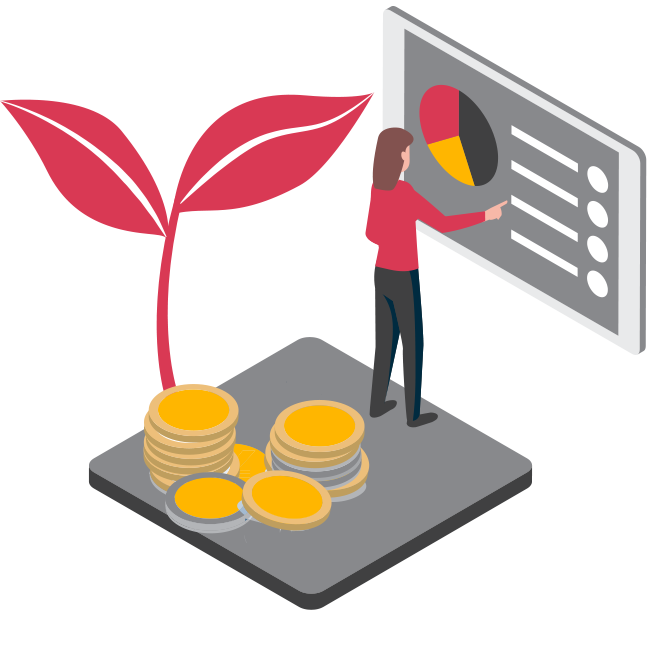

We analyzed the corporate sustainability disclosures of Canada’s top companies. How does your reporting measure up?
We know ESG (environmental, social and governance) is driving a complete reframe of how we conceptualize value. When we step away from the premise that success is based largely on financial measures, everything is upended. But an organization still needs to do well to do good. A long list of ESG activities that’s not defined in terms of the value they have to the organization won’t be sustainable.
Organizations need to develop an ESG strategy and roadmap that are integrated with business strategy and operations and deliver the right returns on investment. That way, they can continue to invest in transformation and evolve their business—not just their reporting.
So where should organizations start? How do you unify your shareholders, equity holders, debt holders, stakeholders, employees and customers? The first step is to take a hard look at where your organization is currently, both in terms of ESG maturity and ambition. Organizations need to know where they are and what they’re aiming for, and they need to have trust and transparency around how they report it.
ESG is perhaps the biggest transformational opportunity of our time, but it can’t be an add-on. It must be part of an organization’s business strategy.
Executives at some Canadian companies have identified what’s key in ESG, their challenges and what to look for. Watch our video to learn more about their experiences before you dive into assessing your own level of ESG maturity and ambition.
Explore our thoughts on each of the ESG profiles and what organizations should consider as they start to bridge the gap between their current maturity and ambition.
Click on the images below:
Here at PwC Canada, we can map most of the organizations we’re working with—and where they want to be—to four different ESG profiles of maturity and ambition: minimalist, pragmatist, strategist and trailblazer. But this isn’t a simple continuum. Regardless of starting point and ambition, every organization will need to meet a new bar of quality ESG reporting and transparency, which are fundamental to trust.
Furthermore, having a net-zero commitment, a chief sustainability officer, an ESG or sustainability report and some inclusion and diversity initiatives doesn’t mean an organization is a trailblazer—in fact, many organizations assume they’re further ahead than they actually are.
While it’s important to consider where your organization currently sits in terms of these ESG profiles, it’s also crucial to think carefully and strategically about your ESG ambitions and goals. Where are you starting out, and where do you see yourself landing? Which pieces will be the most impactful, both in terms of ESG outcomes and business outcomes? And what are the opportunities and risks of making any given decision? In the following sections, we outline some of the big questions we hear most frequently from organizations at each of these stages of maturity.


Organizations at the beginning of their ESG journey typically approach it from a reporting and disclosure perspective. They primarily measure performance for compliance purposes and largely focus their ESG efforts on environmental issues like energy transition and net zero.
If your organization is just getting started with ESG, you may be wondering why you need to do anything beyond compliance—but this is the bare minimum. Regulatory requirements and expectations of investors, lenders, suppliers, customers and other stakeholders are constantly evolving, so it’s important to understand how to measure your footprint and set evidence-based targets.
Doing the bare minimum will likely negatively impact your business, both now and in the long term.
If you have limited or no public reporting, you have an opportunity to set a net-zero strategy that will drive key performance indicators (KPIs) and determine what you do with your business. If you integrate your ESG strategy with your business strategy from day one, you’ll have an invaluable opportunity to leapfrog ahead of your competition in a way that’s trusted and reliable. It will also be an opportunity to gain market share, increase top-line revenue and attract top talent. Organizations just beginning may need insight into which ESG initiatives to start with in order to drive the greatest impact on cash flows, operations and balance sheets.
✓ What are the implications of complying with only the bare minimum regulatory or disclosure requirements?
✓ How will that impact your ability to retain customers or grow the business?
✓ Where do you stand relative to your peers and what they’re doing with ESG initiatives?
✓ Will this impact your ability to attract talent in a hot labour market?
✓ Do you have the right resources focused on this and the right level of executive attention to mitigate risks or capture opportunities?
✓ Are you confident you know what needs to be done to meet these requirements?

Pragmatists often aim for quick wins and typically focus more on managing risks than identifying opportunities. They may publicly report targets and promised actions, but these goals and activities are generally segregated across the organization.
Even if you’re already reporting on sustainability or ESG, the bar is constantly moving.
Or maybe there are gaps: you have some public reporting but no evidence-based targets, or your ESG activities and reporting are segregated within the organization with limited executive compensation alignment. Expectations about the quality, repeatability and level of disclosure of reporting are continually evolving, and investors are relying on this information in the same way they rely on financial statements—particularly if those stakeholders are headquartered in jurisdictions where the ESG regulatory environment is more advanced.
Perhaps you’ve been looking at ESG primarily as a reporting or risk management exercise. As your strategy evolves, you’ll have an opportunity to look at how ESG can play a role in business strategy. Perhaps greening or diversifying your supply chain can help reduce operating expenses or improve cash flow. Perhaps by lowering carbon emissions, there’s an opportunity to attract different customers, create new products or expand your focus, all of which will increase top-line profitability.
✓ Are you maximizing the impact investments and tax incentives available in the market?
✓ Do you have a good understanding of the ESG-related opportunities for growth and risks to your existing market base?
✓ Have you considered the opportunities and potential operating expense improvements from including your suppliers in your approach to ESG?
✓ Do you have a sense of the returns on investment related to the different kinds of ESG activities you could undertake?
✓ Do you know how to make your ESG strategy pay for itself?

Those that see strategic opportunities elevate ESG responsibilities to the C-suite and develop ESG-differentiated products or services. Their reporting and disclosures contain science-based targets and are aligned with executive compensation.
Your organization may have more mature disclosure and reporting, science-based targets and strong alignment of executive compensation. And you may even have ESG-differentiated products or services. But again, the bar is constantly moving. For example, perhaps you’re doing complex scenario modelling around climate risk disclosure, but the frequency, quality and repeatability of those disclosures are changing.
Many organizations equate ESG initiatives with their net-zero and carbon footprint targets—and while those are an important part of ESG, they’re just one piece.
There’s no resting on your laurels. Even if you’re able to maintain the status quo, you’ll end up moving backwards on the maturity continuum rather than towards becoming a trailblazer. The drive to compete on the basis of differentiated ESG performance is creating new products and services and changing business and operating models. If you already have maturity in this space and can meet the rising expectations around reporting and disclosure, you can then focus on integrating ESG across your operations to gain competitive advantage.
✓ What are your competitors doing?
✓ What are your customers saying about you? What are your suppliers saying? What are your employees saying?
✓ Is ESG baked into your brand, so customers, suppliers and employees see it in their interactions with your organization?
✓ How is your ESG story a part of everything you do?
✓ How can you tell your story differently to grow top-line revenue, attract and retain talent and improve your cost of capital?

Trailblazers are purpose-led organizations that integrate ESG across the business, placing it at the core of their purpose, strategy and products or services. They integrate financial and non-financial reporting using ESG KPIs as well as enhance standards and regulatory frameworks through public advocacy and participation.
In a purpose-led organization, the CEO is responsible for ESG and, even if other executives are involved, takes public accountability for sustainability and purpose. It’s core to everything the organization stands for.
Even if your organization is at a highly sophisticated stage, regulations continue to evolve, and even the most advanced organizations are facing an increasing burden around reporting and disclosure.
And they may be leaving money on the table or exposing themselves to risk based on the geographic location of their operations, tax credits or border adjustment mechanisms.
There’s both opportunity and risk for even the most advanced organizations. Regulations vary from country to country, and there are many standards that are constantly evolving. Keeping on top of that is difficult, but those that do can add value to the organization by mitigating risks or creating new value. Organizations leading the way on ESG strategy can still benefit from mapping and measuring the overall value they’re delivering to stakeholders and shareholders. This is key to being able to look around the corner and see what’s next for ESG.
✓ Are you up to date on the latest regulations and requirements from banks, regulators, standards bodies and other stakeholders?
✓ How are you measuring the value you’re delivering to stakeholders?
✓ Are you aware of the pressure points in your ESG ecosystem? What could erode trust?
✓ How are you advocating for and participating in the development of standards and regulatory frameworks?
ESG isn’t just about compliance: it’s part of a much larger trust agenda.
When we think about how to sustain outcomes, transformation and strategy will be key to creating both business and social value.
ESG can enhance operational efficiencies and raise your company’s profile, attracting capital, customers and top talent in ways that can be evaluated with quantifiable KPIs and return on investment. And new economic opportunities are constantly emerging for ethical, renewable and sustainable products.

Partner, Risk Assurance Services, PwC Canada Board Chair, ESG Practice and Net Zero Leader, PwC Canada
Tel: +1 604 806 7711
